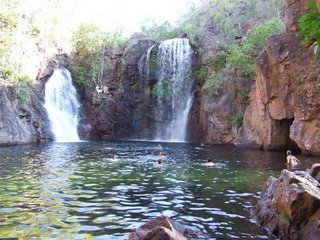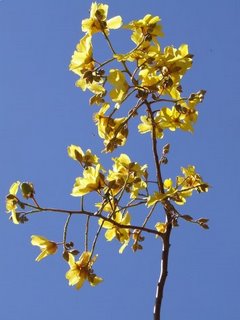Into the Desert: Space
Without wanting to understate the adjustment and occasional frustration with living in such close proximity to one another, the real answer came within days of returning home, with the comments about how hard it was to live in such confined spaces. Yes, that's right – AFTER we were home, and inside a larger house (well, at least larger than the van!)
Mornings were often greeted in the van with a view to the horizon from one's bed, and the day farewelled in the same way. Life was lived outside for the most part, where the views were much more extensive than those available from our front door or out a bedroom window (and that's saying something – we have pretty good views of the city from our front door). In parts of the journey, particularly in the desert regions, the views were panoramic, stretching out before us in all its colour and grandeur, its arid expanse and variegated rock formations able to be drunk in at leisure.
Space is not only a function of distance, but of time also. There have been times sitting on the beach at home when I have felt an invisible hand in my back pushing me on to other things, the world closing in around me, strangling the sense of freedom. But in the desert, time and pressure dissipate in the vast expanses. Indeed, in some places, even travelling at 100 km/h, the desert passes slowly, encouraging you, daring you, provoking you into connection with it. In the cities, one is faced with a constantly changing backdrop, such that one learns to switch off to the signs, the cars, and many of the sounds which swirl about us. The space closes in and moves by with speed. But in the desert, space steps back from you, its diffidence and constancy part of its allure, a quiet invitation to be free, to be enveloped in its vast expanses, and to be part of its grandeur. Over time, one finds oneself more in tune with its rhythms, liberated by its lack of limitation and its enduring presence.
Occasionally the desert called you very close, whether it be to give examination to its rare flowers or insect life, to give attention to a strange sound, or light. But it always stepped back, giving you room to move and explore, waiting for the right time to draw you close once more. Its enduring patience and presence part of its charm, almost a breathing, as-it-were.
Those who have never been to the Territory cannot appreciate what is meant by one who says “its colours get into your soul.” They certainly get into your socks, your clothes, and your car! But these echo the stains it makes upon your psyche, and the relaxant it injects into your heart. The desert landscape remains largely as it was centuries ago, even longer, reminding us that beauty sometimes comes from stillness, from slow shifts in concert with the elements, which are embraced. City life often involves closing out the elements: their sense of chaos, their unpredictability and volatility much better managed when kept at a distance. But these elements shape the desert charm, and those who dwell within it. Activities are often deferred or adjusted when the elements turn as their continuance invokes greater risks. High winds are not deflected by buildings, held back by walls, or excluded by windows. Their strength felt in the rocking of the van, or directly against clothing. Engaging with the desert means facing wind, rain, and heat and learning what is healthy and possible in concert with them, unconditioned by heaters, coolers and tiled roofs.
In time you learn to read the landscape, welcome its shifts through the day, heed the warnings it invariably gives. This sensitivity highlighted as we left Yuendumu, when Cobra warned us of a “bad wind... hot, cold, hot, cold... coming from the wrong direction.” We sat beside a warm campfire in the balmy evening, watching the patchy cloud dancing across the sky, playing hide-and-seek with the full moon, the warm winds from the North-West blowing gently. Within a matter of hours the sky was blackened, the thunder and lightning looming in the distance, finally opening with heavy rain some 14 hours after Cobra's prescient observation. Here was a man who knew the land and its ways, who had embraced the desert space and his place within it, identifying its foibles and patterns, seeing something which we had not.
In the vast desert expanses there is an intimacy with the landscape available to those who learn its character, and embrace its pace.












